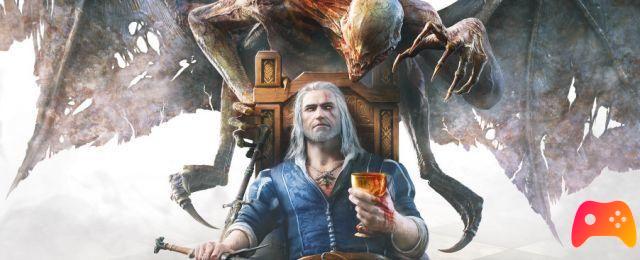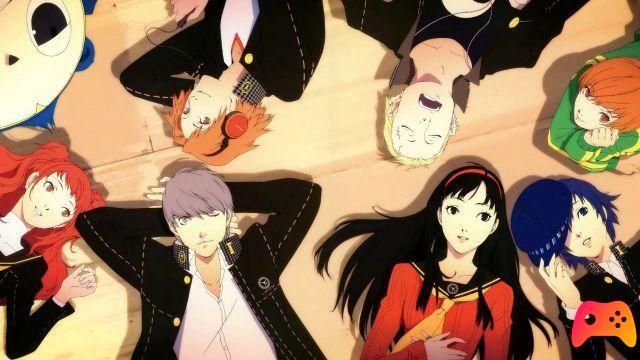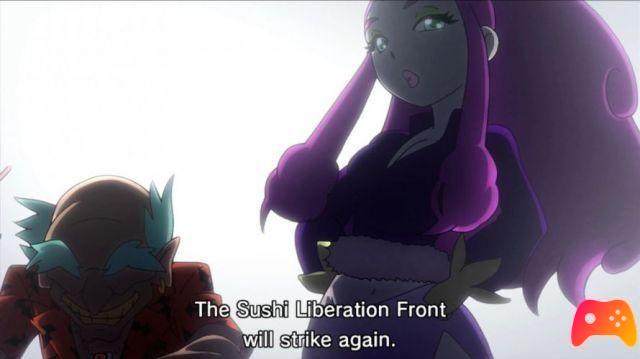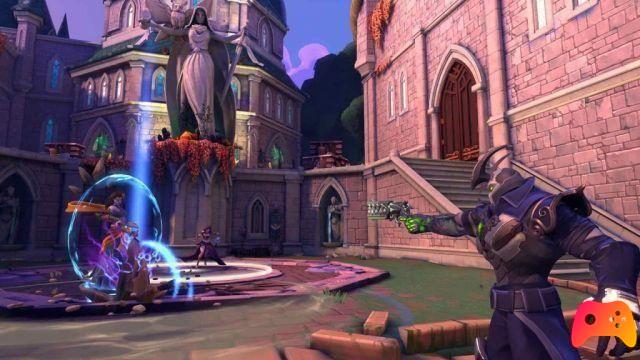
Third episode of a successful videogame saga inspired by the novels of Andrzej Sapkowski, The Witcher 3: Wild Hunt was the first RPG to show the real potential of new generation platforms, in terms of plot, vastness of environments, longevity, care for details and quantity of missions.
Released in May last year, The Witcher 3: Wild Hunt has been continuously supported by the developers of CD Projekt RED who, far from resting on their laurels of a deserved success, have released numerous updates, special contents, free themes over time. and DLC. An attitude so passionate on the part of the Polish company that it has now transformed the adventure of Geralt Di Rivia into a much better title than the initial one, already excellent in its own right. In a market now saturated with trivial, short and careless DLCs, CD Projekt RED has seen fit to release for Wild Hunt two expansions so well done that they can be considered single RPGs. The first, Hearts Of Stone, while excellent in the realization, in terms of vastness, plot, settings and general realization, is only a preview of what we will live in this Blood And Wine, last chapter in the adventures of our favorite witcher.
Honor, tournaments, ladies and vampires
The plot of Blood And Wine starts with a classic call for help, the kind that Geralt usually finds pinned to bulletin boards during his adventures in the northern realms. Having met two knight friends, our witcher finds himself in the grand duchy of Toussaint, shaken by ancient internal wars but only touched by the wild Hunt, an apparently happy and prosperous land that, among ladies, knights and tournaments, seems to come out of chivalrous romances of courtly love .
Even the names of the various characters we are going to meet, from Palmerin De Launfal to Damien De La Tour to the brave Milton De Peyrac, recall feats of honor and glory in the shadow of the immense castle of Anna Henrietta Toussaint. The charming and lively Duchess will guide us to the beginning of an adventure that will soon prove to be much more dangerous than we actually expected. A creature as powerful as it is elusive is in fact killing some of Toussaint's knights with ferocity but, unlike many other enemies already faced by Geralt, this one seems to have some sort of logical method in its kills.
In fact, after some investigations, the witcher discovers that the victims had violated, in one way or another, the five sacred precepts of the knights: honor, wisdom, generosity, courage and compassion. Having obtained the help of the enigmatic Emiel Regis Rohellec Terzieff-Godefroy, an old friend (much older than you think), with a past as complex as his name, the field of investigation narrows around a certain Dettlaff Van Der Eretein, whose physical and mental abilities seem to far exceed those of the strongest of witch hunters.
The plot of this Blood And Wine, as already happened for Hearts Of Stone, takes place parallel to what has already been seen in the main adventure of Wild Hunt, and constitutes one of the best sides of this title by diverting the genre towards a sort of excellent detective- fantasy story. The characters are immediately well characterized, the dialogues are once again well studied and the plot (which can be explored thanks to the numerous missions and books that we will find) is among the best views in the entire saga. The same atmospheres recall the Breton novels, without missing a fascinating horror-gothic background, in fact we will soon learn that in the grand duchy of Toussaint nothing is as it initially seems, and between white and black there are also a thousand shades of gray here.
Live like a knight, fight like a witcher
Blood And Wine, far from wanting to recycle the mechanics, albeit good, of the original Wild Hunt, introduces so many changes that it almost gives the impression of being in front of a The Witcher 4. As with Hearts Of Stone, it is possible to face this new adventure in three ways: during the mammoth main campaign of Wild Hunt, by importing a character of a fairly high level from this, or by starting this Blood And Wine individually, with a preconstituted character of 34th level and immediately equipped with an equipment powerful enough.
Shortly after the start of our adventure we will find ourselves in a whole new region, with a much higher percentage of points of interest than seen in the past adventures of Geralt Di Rivia. The amount of new content introduced by this adventure is such as to make Hearts Of Stone look like a simple demo, it includes ninety new missions, many of which are so long and well done that in other situations (and with other developers) they would have been easily sold individually. . We will also find a hundred new pieces of equipment, some of which are legendary and unpublished (among all the manticore set and the vampire armor stand out), and of course new bosses more cunning and less predictable style, even if their tactics of attack still seem faithful to the use of simple brute force.
New enemies, characters, treasure hunts, upgrades and merchants further enrich our adventure, made even more enjoyable by substantial renewals in mechanics, options and general gameplay, so numerous that it deserves a new dedicated tutorial. Where the excellent Hearts Of Stone was limited to some slight changes, while maintaining a structure identical to the original title, this Blood And Wine renews, streamlines and in some cases pleasantly distorts what has been seen in the past.
The map function is now more complete thanks to some substantial improvements, including the possibility of inserting filters for the signals, which make consultation much faster. The inventory has now been rearranged and made more intuitive (even if the management by the merchants remains a bit slow), a necessary innovation, given the large amount of new equipment and items available, among which we also find a whole new deck of Gwent dedicated to the Skellige Islands. Many of these revamps are also available separately thanks to the recent 1.20 patch. The enemy attack patterns are now less obvious, forcing us to a certain amount of more tactics, and the general combat system itself has been further refined thanks to the introduction of mutations.
Accessible from our character's screen after completing the “Facing the Unknown” mission, these twelve mutations enhance Geralt's synapses and allow you to use hidden powers derived from mutagens, manageable separately from the classic abilities. Only one mutation can be kept active at a time, but their wise management allows you to turn the tide of the most difficult battles and, at high levels, even add new upgrade slots for the basic skills. This welcome novelty, in addition to enriching an already excellent combat system of its own, eliminates what was perhaps one of the few, true defects of Wild Hunt: the scarcity of skills available at high levels.
The developers, in the excellent general realization, have also managed to insert a sort of management minigame: our Geralt, in fact, shortly after the start of his adventure will come into possession of the Corvo Bianco home, already linked to the main plot so rather macabre. This residence, complete with a butler, will be restored and enriched with elements such as the whetstone, the bedroom and the alchemy laboratory, which will improve our characteristics and further enrich the mechanics of the title.
The massive amount of new content, combined with the number of missions and the length of the main storyline, will take us on a fascinating adventure that is unlikely to end before reaching 20-30 hours of play.
A grand duchy of colors and blood
One of the few disappointments that accompanied the release of The Witcher 3: Wild Hunt was the substantial technical difference between what was admired in the demo presented at E3 in 2014, and what was seen in the actual final product. Nothing really serious (however less than what happened in titles like Watch Dogs and Alien: Colonial Marines), but it was still a slight disappointment in the players. Disappointment partially diminished thanks to the release of continuous corrective patches that have significantly improved the technical sector of Wild Hunt. With this Blood And Wine, CD Projekt RED seems to want to bring the technical sector of Geralt's adventures as close as possible to what was seen in that famous demo.
The textures are now much more detailed, the animations more accurate and above all the frame rate remains very stable, but what is most striking in this new adventure is the use of colors.
The settings, in fact, have been recreated from scratch without recycling almost anything of the graphic material already used in Wild Hunt or Hearts Of Stones, taking advantage of decidedly more cheerful and bright colors, without ever falling into gaudy. A choice that in other hands would have been disastrous, but that in those of the Polish developers goes very well with the chivalrous setting. However, the technical improvements and the fairytale colors remain confined only to the Grand Duchy of Toussaint: as soon as you return to the Wild Hunt areas, in fact, the graphics go back to being the original one.
CD Projekt RED, as always, stands out par excellence also on the sound side: the dialogues, well subtitled in Spanish, are still excellently recited (in English), and the two hours of completely new music, are well suited to the original chivalrous dualism - Gothic of the setting. The only flaws are to be found in a collision and combat system which, although significantly improved compared to before, still remains imperfect, and in some long uploads, especially in the event of the death of our character.
Tackling Geralt Di Rivia's latest adventure is like getting lost in a splendid tale of ladies, knights, tournaments, honor and vampires, the kind that would have made Thomas Malory and Sir Walter Scott happy, without forgetting a certain Bram Stoker. Expectations for this expansion were very high, also due to the general high quality of CD Projekt RED's previous works, but they were not disappointed in the least. Between a decidedly improved technical sector, a large amount of new content, improved mechanics, a plot among the best ever written for an RPG and an impressive amount of new and excellent missions, the Polish company could not find a better way to conclude in beauty the adventures of the famous witcher. Blood And Wine is arguably the best DLC ever, at least in the RPG field, and is the final proof, if we ever need it again, of the passion that CD Projekt RED has put into the entire saga, a symbol of their immense respect towards of the players.
Verdict: recommended to everyone






